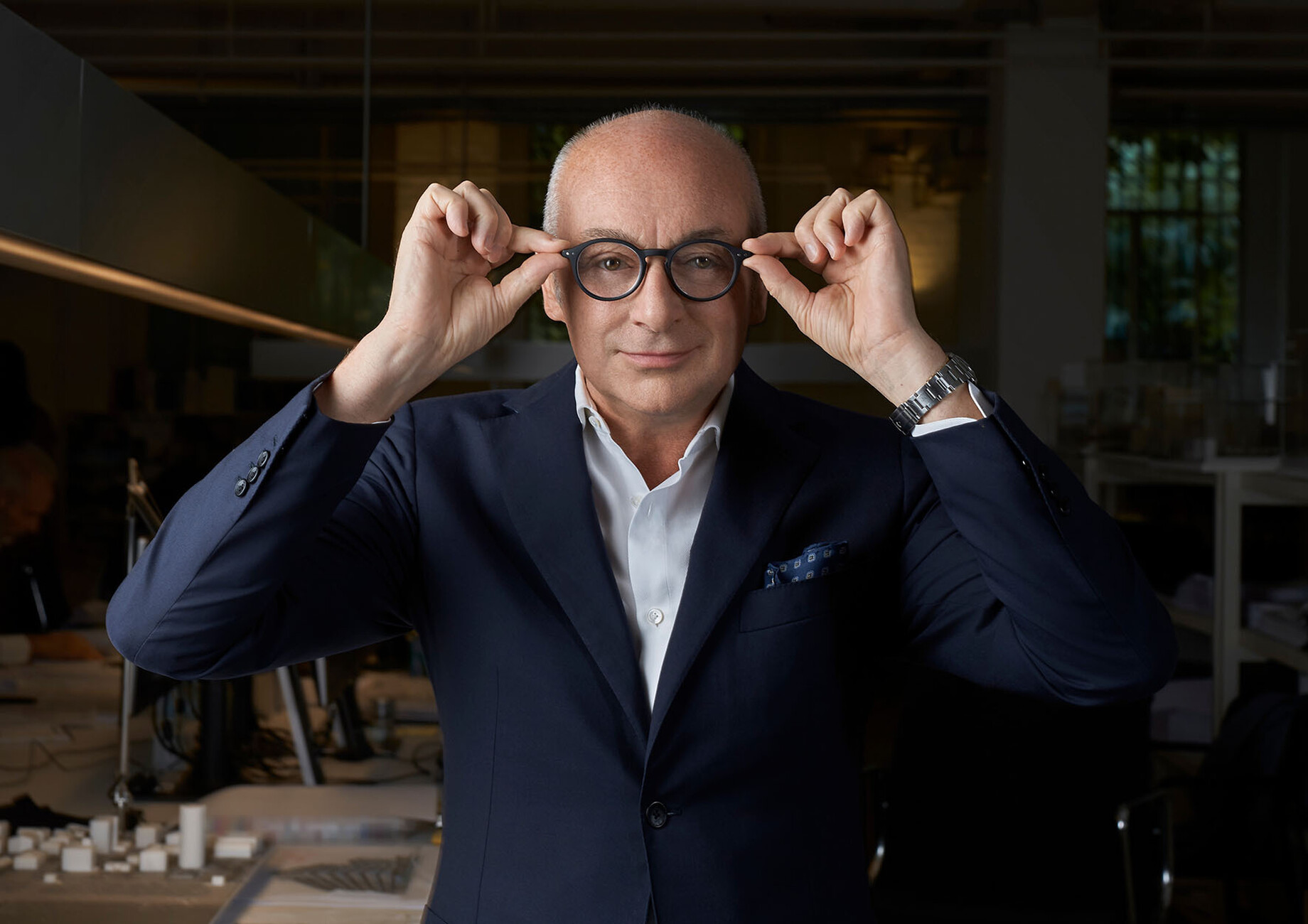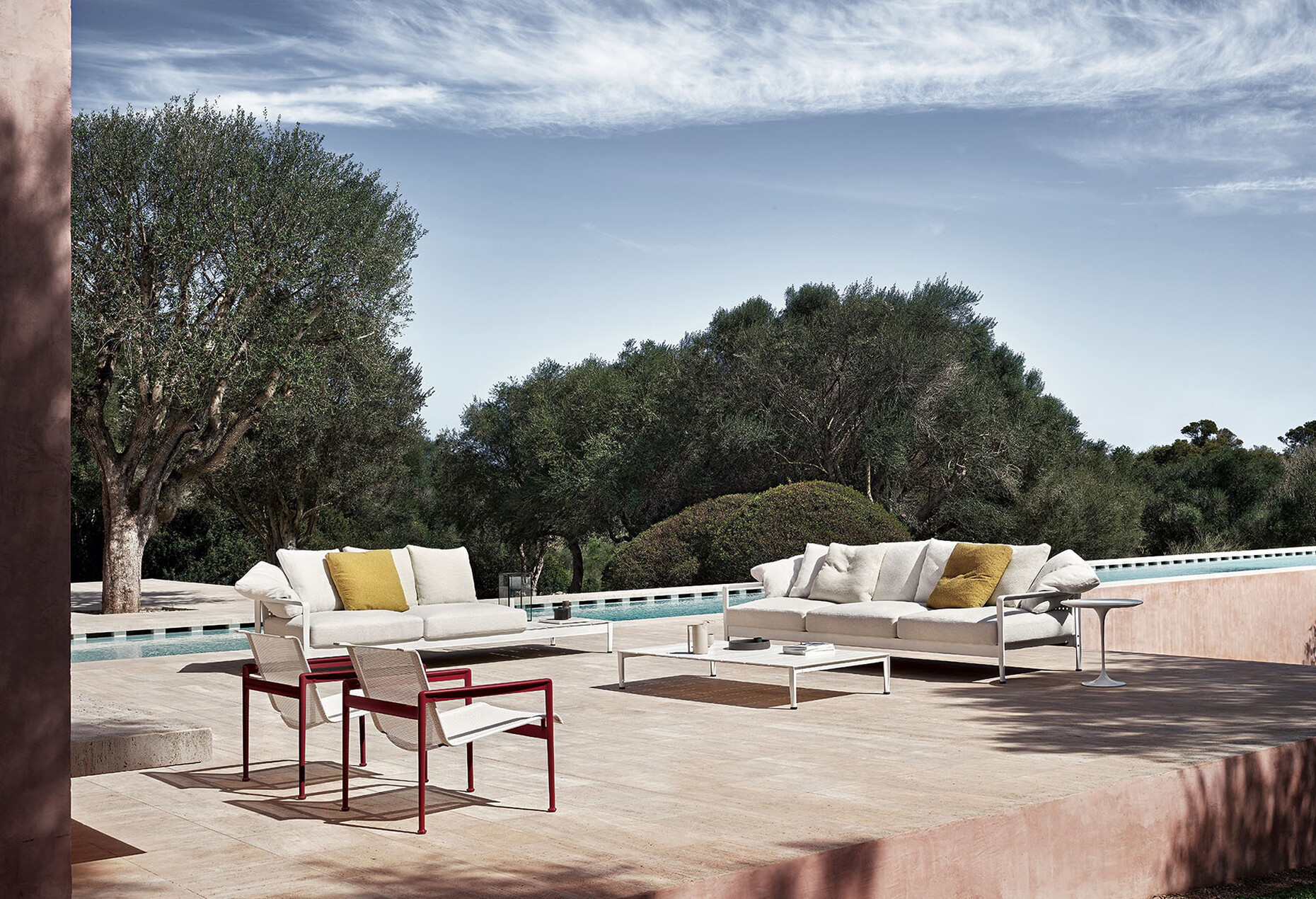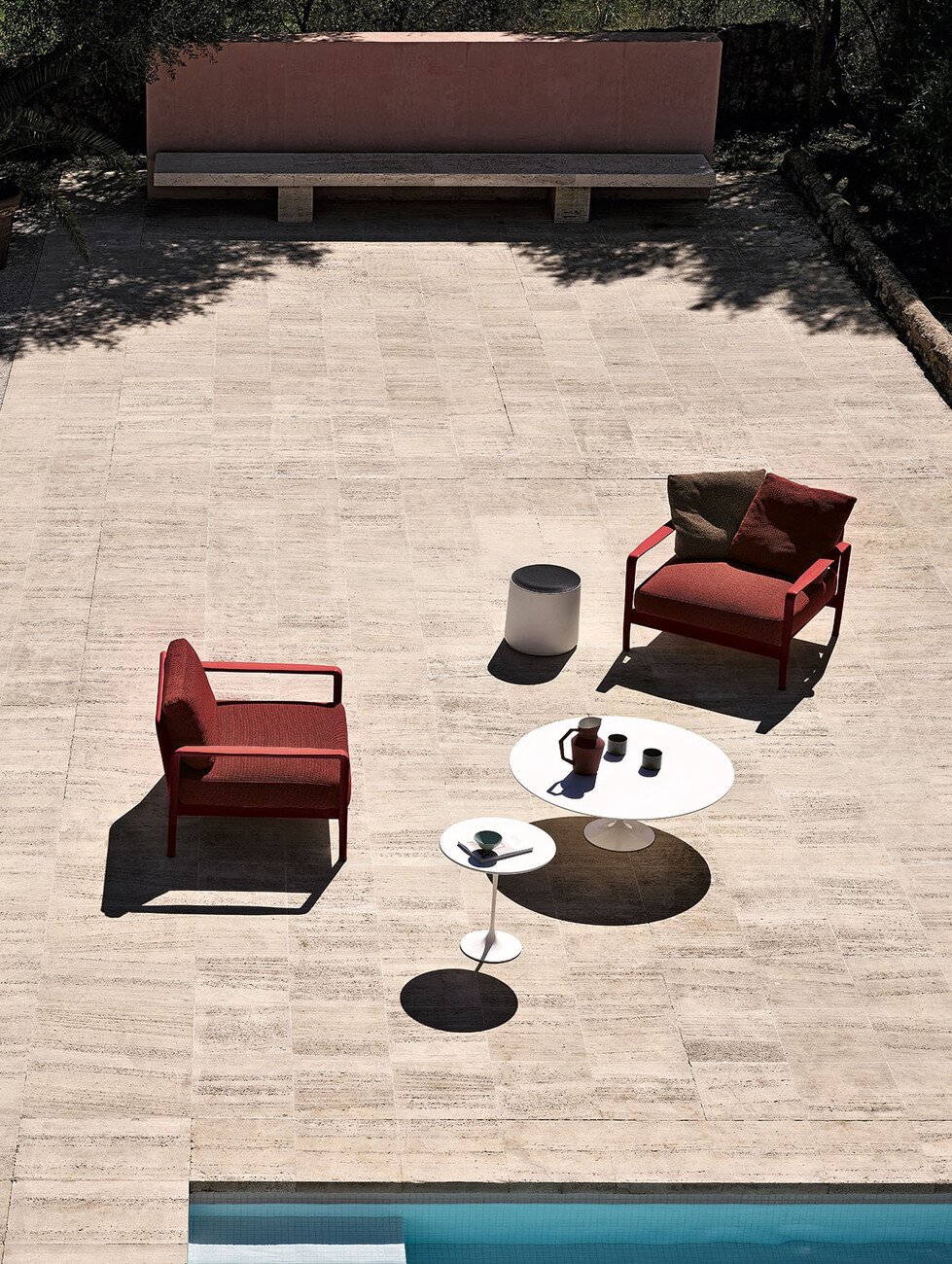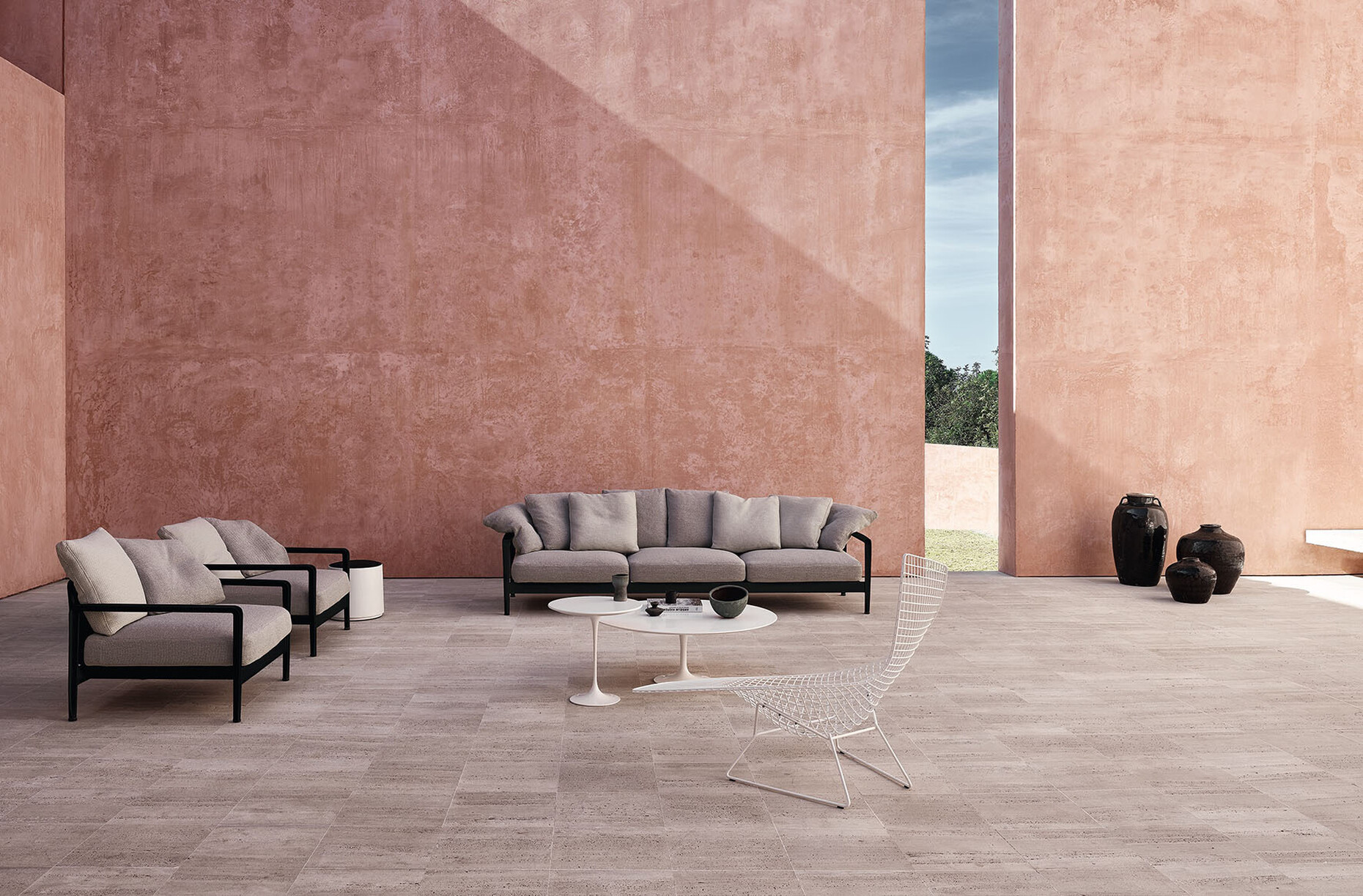The architect of lightness
Esther Strerath: Many of the pieces of furniture you designed years ago can still be found in the ranges of major brands, so they are currently in demand. Pardon me, but why are you still working?
Piero Lissoni: Out of passion. I'm still like a child in the playground. You have to follow your feeling.
In recent years, the outdoor furniture sector has grown steadily, with more and more interior manufacturers entering the market. At the Salone del Mobile, Poliform and Molteni&C, among others, debuted with their first outdoor collections.
Piero Lissoni: All companies have discovered the outdoor gold rush for themselves. Outdoor is now the new indoor, is the living room under the open sky. I started designing outdoor furniture more than 20 years ago. The very first piece was a chair for Living Divani, for which we transformed the Frog from indoor furniture to a garden chair. (Editor's note: Frog Chair, 1996)
Now Knoll is also presenting a new collection from your pen, the "Lissoni Outdoor Collection", based on the iconic garden furniture by US designer Richard Schultz from 1966. Why?
Piero Lissoni: Three years ago, Knoll – who had been working in the outdoor sector for ages – approached me about this project, we are a bit late. Do you remember the 60s and 70s? The beautiful Schultz collection? Our new pieces are a continuation of that.
Do you, or rather the new collection, follow a trend, a current?
Piero Lissoni: Although I want to be polite, I have to say that 90 percent of outdoor furniture seems boring. Everyone is trying for a natural look, fake bamboo, fake wicker, fake teak. But we don't live in Bali, we live all over the world. Durability is the be-all and end-all. Sofas are created through their stability, backrest, armrest, et cetera. I try to re-model this idea, to use surfaces differently. I am an architect. When I design a piece, I see the architecture of a project, not what someone wants.
So what makes your collection stand out?
Piero Lissoni: It's about using materials correctly, with the substance of today. It is difficult to do this. Now I've only changed a few technological aspects; at Knoll, for example, we're shaping a new generation of aluminium, which is made of more than 50 percent recycled aluminium and is a bit rougher. You have to paint it, you can't use it "raw". The holes in the backrests, on the other hand, are a purely technical solution. The nylon that we use for the backrests is different and also a recycled material. And the upholstery fabrics are incredibly soft, yet they are made of polyester and nylon. In short, it's a real outdoor system. Every time is different, you have to adapt, including yourself. We discuss such aspects. By the way, I do the same for other companies, for B&B Italia's current outdoor collection, "Nooch" for example.
Is it actually easier to add to a "furniture family" or to start from scratch?
Piero Lissoni: Usually I start from scratch, I invent something completely new. But then the designs come together with the family. Think of rainbow families, patchwork families. My collections are exactly like that.
The topic of colours is also becoming increasingly important. The "Lissoni Outdoor Collection" is available in three. You are famous for "All shades of White"...
Piero Lissoni: You have to follow your approach, otherwise it becomes a dogma and I've never liked dogmas. Even when I started at Knoll, they asked me to use the classic Knoll red. I refused because it was good in the 60s, but not in 2003. The red here is a jewel.
The perfect outdoor furniture is ...
Piero Lissoni: ... a machine, like a motorbike. Or an aeroplane.
What makes working with Knoll so exciting?
Piero Lissoni: In the 60s and 70s, Knoll was incredibly sophisticated, always modern. The campaigns were wonderful. For example, there was a cat enthroned on an armchair like a king. Mrs Knoll was a real visionary. Her humanistic approach, combining the organic forms of Eero Saarinen with the purity and strength of Mies van der Rohe and the craziness of Ettore Sottsass – terrific. I feel like a little boat in this endless river.
Are you in line with history?
Piero Lissoni: Yes, more or less.










